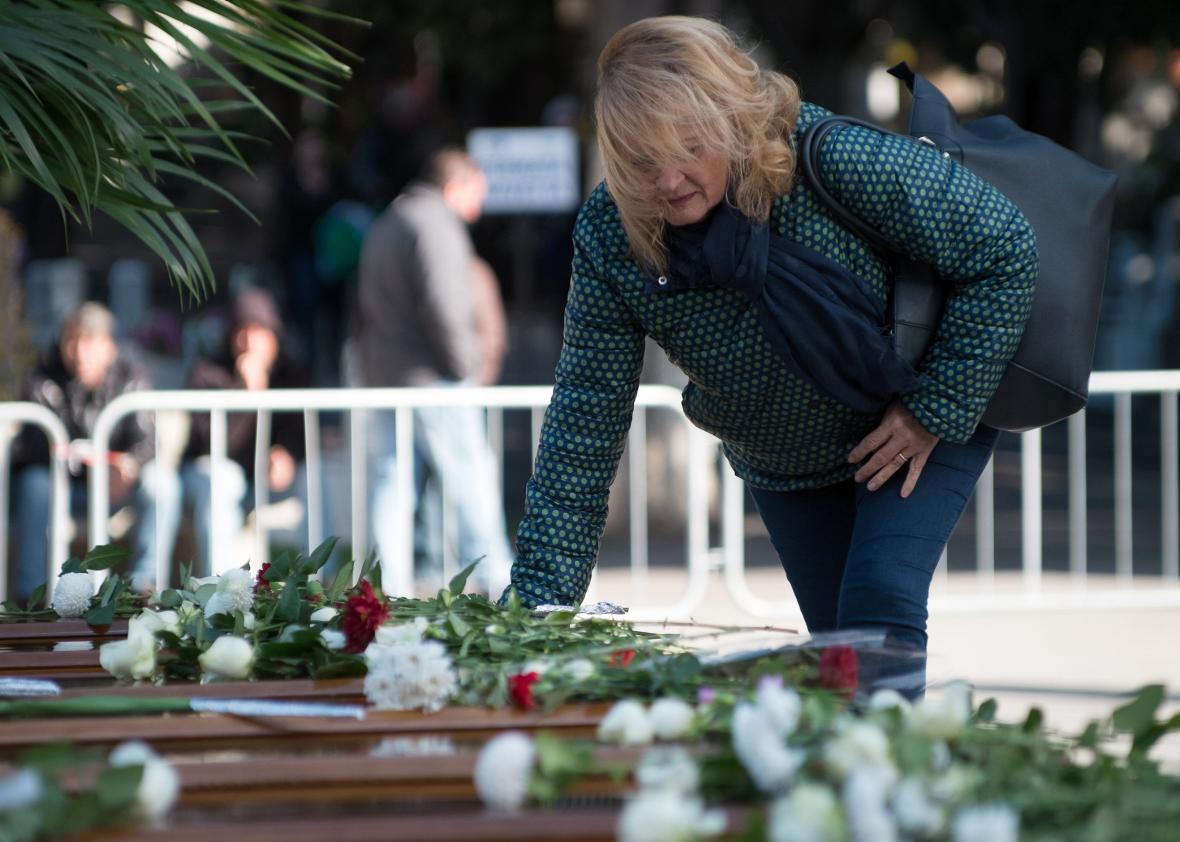This article is part of Future Tense, a collaboration among Arizona State University, New America, and Slate. On Dec. 6, Future Tense will hold a happy hour event in Washington, D.C., about planning your digital afterlife. For more information and to RSVP, visit the New America website.
Death as an industry has been difficult to disrupt. Right now, the average age of a funeral director hovers somewhere around 55. The death industry is heavily regulated, with federal and local laws governing everything from the management of bodily fluids to the quality of caskets ordered online. And, of course, grieving is tied up in millennia of religious and social tradition.
But the ritualistic, omnipresent, and uniquely difficult nature of death hasn’t just stymied startups; it’s also made it hard for innovative minds already working in the field to push the boundaries of their profession. The funeral industry was late to the internet and late to social media. Even as custom websites proliferate and funeral home’s Facebook pages amass a following, the industry is still struggling to mold the digital tools of the era to their peculiar needs. But that doesn’t mean people aren’t trying to get the industry up to speed.
Bryan Chandler is the owner of Chandler Funeral Home and Cremation Service in Caldwell, Ohio. A little town with less than 2,000 people, Caldwell sits along Interstate 77 near the border of Pennsylvania and West Virginia. There, as in many small communities around the United States, deaths are always the talk of the town. Outside of the funeral home, along a well-trafficked road, Chandler has installed a reader board with the names of the recently departed. And at lunchtime, everyone in town tunes into for a daily radio roll call that also lists the name of the dead. The local paper, which comes out once a week, runs obituaries, as do daily papers in neighboring towns like Columbus to the west or Cleveland to the north.
But Chandler knows that, at least in the internet era, these methods don’t cut it. “I bought [Building a Website for Dummies] and learned coding myself,” Chandler says. “[Fewer] people are purchasing newspapers, more and more people are getting information on the web.” His funeral home now tweets out obituaries; posts death announcements, guides to grieving, and funeral how-to’s on Facebook; and even started an email alert system to send obits direct to people’s inboxes.
Facebook has given Chandler and the families he serves an unprecedented tool for communication. When loved ones are writing an obit, they can send it to family all over the country for feedback. When someone’s struggling to arrange a funeral, they’re just a click away from some of Chandler’s warm words or advice. But Facebook and other social media platforms have also opened mourners up to abuse. Chandler says memorial pages and obituary comments sections have been targeted by trolls, but more often, the problems arise when people share real gripes they had with the deceased.
Even the email system for obituaries has had some blips. Currently, the page where you can sign up for email announcements, for example, is plastered with a reminder to add Chandler Funeral Home to your safe senders list. In the past, Chandler says, some people haven’t received the obituaries because their email service provider marked the funeral home as spam. But he says he never expected these tools to be flawless. “We just try to get it out every way we can,” he says. “Unfortunately, you always have someone who says, ‘I had no idea.’ … There are just people we’re never going to reach.”
In addition to his desire to keep community and family members in the loop, Chandler, like many of his peers in the funeral industry, also sees profit potential on the web. While older people may be hesitant to see some of these newfangled technologies sliding into one of the most ancient experiences on Earth, Chandler says young people are all for it. He offers a clever four-step cremation service that can be initiated with a single phone call. He relies on sophisticated but user-friendly online design tools to meet the rising demand for high-quality memorial videos. Families order everything from coffins to floral arrangements online. And the trend of personalization, which has resulted in a thriving thumbprint jewelry market, likely won’t stop, so long as these memorial services are just a click away. While online services have drawbacks— trolls do glom onto online memorials and issues can arise when online deliveries arrive late—Chandler thinks the web is full of promise.
The internet has made information easier to spread, allowing people who might otherwise have missed the memo to come together and mourn the dead. But it has also made it possible for tragic and unexpected Facebook notifications from a still-active account of a dead person to proliferate online. Perhaps what’s really happening is that we are in the midst of an unprecedented and even unnerving opportunity: to create and refine new rituals around death that embrace the internet while remaining comforting and communal.
